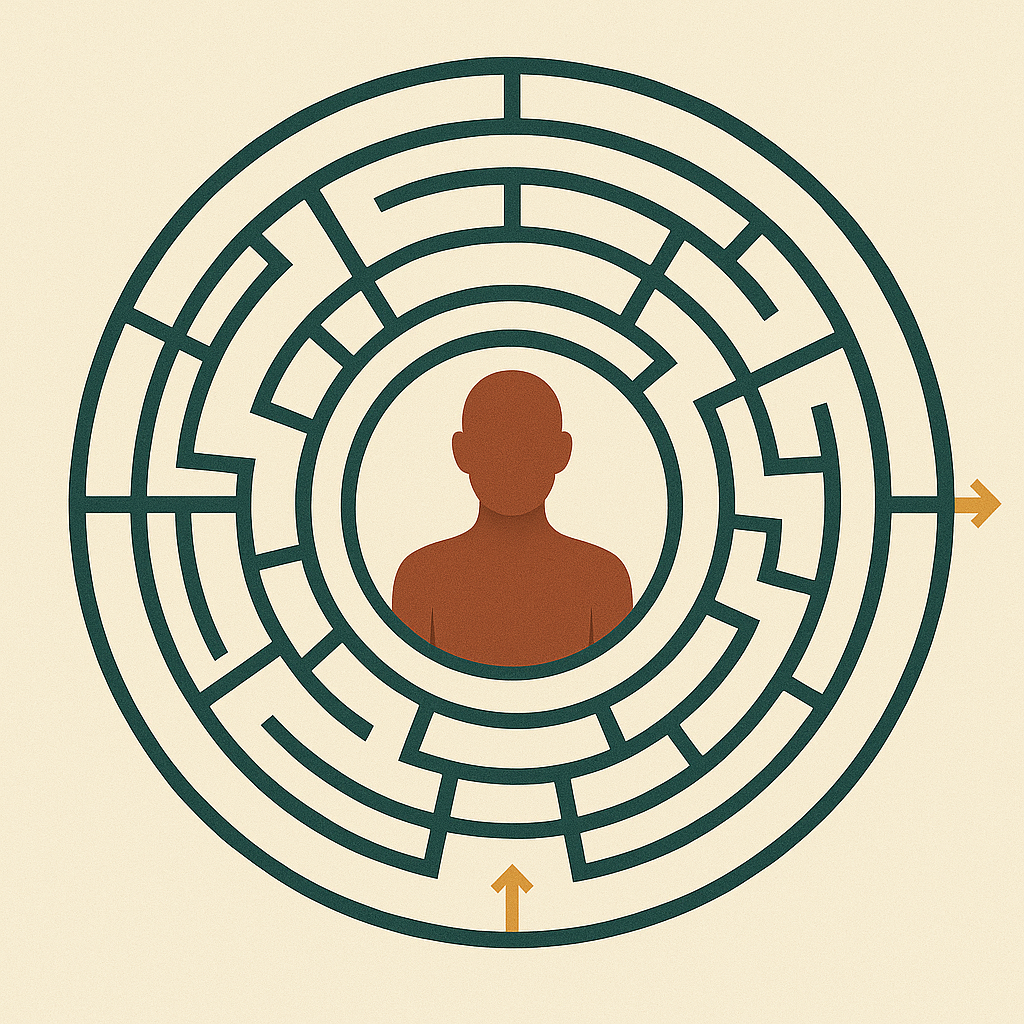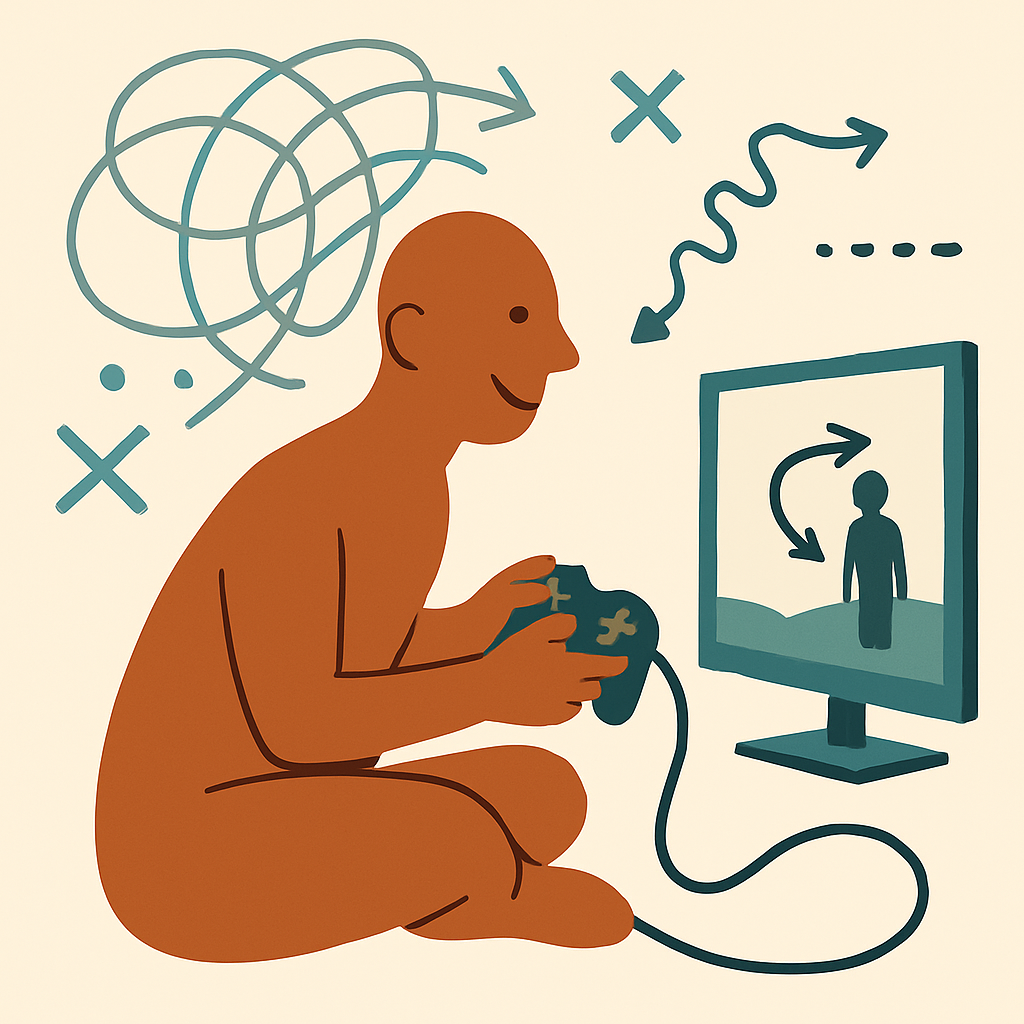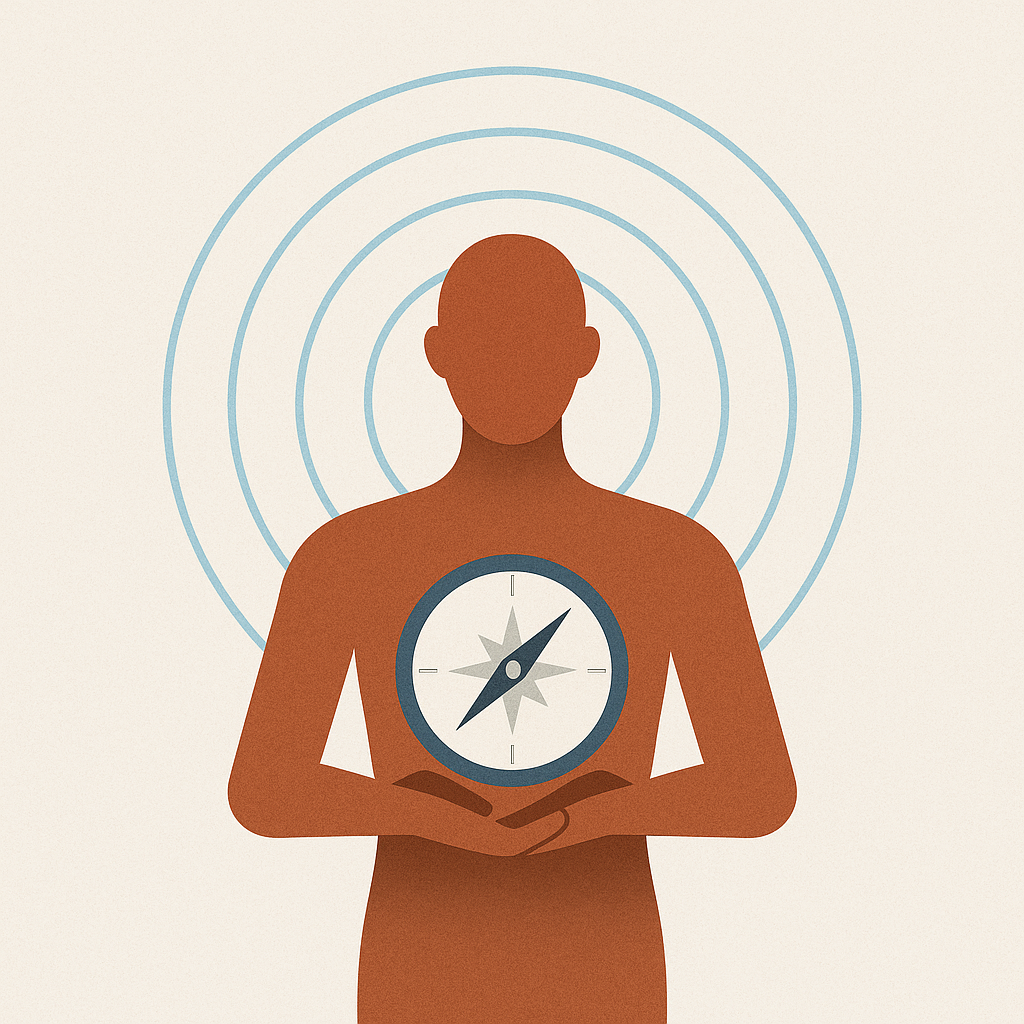When Life Becomes a Loop
Have you ever felt caught in an echo chamber of your own making—a loop where the same outcome seems to repeat on a daily, weekly, or even seasonal basis? This is the power of a hidden force we call The Pattern Loop. It is the philosophical realization that a vast majority of our lives are not random but follow an unnervingly predictable path.
At the heart of this loop is the relationship between Inputs and Actions. Your brain receives subtle environmental signals, which are almost the same—not identical, but merely similar—and these consistent triggers lead you to make almost identical, repeated choices. Whether it’s the 4 PM slump that acts as a cue for the snack cabinet, or the specific kind of work stress that makes you retreat, you are consistently reacting to a predictable Pattern.
To “Figure Out Your Patterns” is to recognize this reality. We are referring to a cycle of repetitive behavior that operates on a rhythmic schedule—a cycle often so engrained that we mistake it for personality or fate. But it is simply a loop that your brain has prioritized for efficiency.
Even more profoundly, as your individual patterns play out, they happen collectively to the people around you. Since we are all part of each other’s environment, we are not just receiving inputs; we are contributing to them. This creates a subtle, powerful, collective rhythm that reinforces our personal cycles, making the pattern even harder to spot. It begs the question: is this repetition merely the hand of fate, or is something deep within our own psychological and neurological architecture demanding this predictability?
From Cues to Certainty
The predictability we observe is not a mystical curse, but a magnificent display of efficiency driven by an ancient part of your brain known as the Basal Ganglia [1]. This small but powerful cluster of neurons, buried deep beneath the cortex, is your neural engine for habit. Its primary role is to take complex sequences of action and thought and consolidate them into a single, automatic unit—a process known as Chunking [2].

Once a pattern is chunked, the Basal Ganglia only requires the initial Cue (or Input) and the final Reward to run the entire sequence on autopilot. This is the source of our behavioral similarity: the brain seeks certainty and minimizes decision-making effort. It’s why you can drive home and barely remember the route; the routine has been streamlined.
The crucial psychological layer here is how the Basal Ganglia treats the input. It is not seeking a perfect match (an identical input, like a computer machine), but rather a high degree of similarity. If the initial input is close enough to a previously learned cue—a slightly different time of day, a familiar feeling of stress, or a similar tone of voice—the Basal Ganglia fires the same sequence. This neurological shortcut is what creates your reality of similar inputs leading to similar actions, reinforcing that predictable Pattern Loop we discussed earlier. Your patterns are simply the brain’s highest confidence answer to a repetitive set of environmental questions.
How Your Patterns Sync with the World
The efficiency of your Basal Ganglia would be manageable if you operated in a vacuum, but the reality is that your patterns are not self-enclosed. They exist in a network, creating what we can call Social Synchronization.
Consider the people you interact with daily. You contribute to their environment, and they contribute to yours. If Person A and Person B share an environment, A’s habitual action becomes an Input—a Cue—for B, and vice versa. Over time, as both A and B respond to the same overarching environmental stimuli (like the stress of a shared deadline or the slow rhythm of a Sunday morning), the similarity of their individual inputs begins to match on a time-basis.
This continuous feedback loop means your patterns are constantly being validated and reinforced by the actions of those around you [3]. If everyone you know defaults to checking their phone when facing a moment of friction, that collective action normalizes and strengthens the neurological pathway in your own brain. Your repetitive actions, therefore, are not solely a personal choice but a subtle, rhythmic response to the predictable behaviors of your social structure. This collective validation is what makes the pattern so difficult to challenge; you are not just breaking an individual habit, you are stepping out of a shared, predictable cadence.
To escape the echo, you must first acknowledge that your predictable actions are often a synchronized reflection of the predictable inputs your surroundings provide. This brings us to the pivotal question: If the world is always inputting the same cues, how do we intentionally disrupt the synchronized loop?
Mapping the Pattern Fault Line
If our patterns are constantly reinforced by the silent, predictable cues of the world around us, the only way to break the synchronization is through conscious interruption. We cannot change what we don’t measure. Your first step toward true freedom from the Pattern Loop is to become a dedicated observer of your own mind—to map the Fault Line where the automated loop begins.
The core of this self-awareness toolkit is a simple, three-part monitoring framework. This is your personal investigative journal designed to capture the life of the pattern in real-time. Whenever you spot yourself falling into a predictable action—whether it’s reaching for your phone during an awkward silence or defaulting to anger during a disagreement—note it down using this structure:
| Element | Focus | Goal for the Reader |
|---|---|---|
| Trigger (The Input/Cue) | The specific environmental or emotional signal that started the sequence. | Identify the ‘Similar, Not Identical’ Cue. What was the exact moment, person, feeling, or time? |
| Symptom (The Action) | The immediate, automated, and often regretful action you took. | Document the Habitual Response. What did your Basal Ganglia run on autopilot? |
| Effect (The Outcome) | The resulting consequence, feeling, or net result of the action. | Measure the True Cost. How did this action make you feel 5 minutes or 5 hours later? |
This dedicated logging system forces you to slow down the speed of your predictable life. By isolating the Trigger, you gain precious milliseconds of awareness. This awareness is the Fault Line—the small gap of intentionality where you can stop the momentum of the loop and choose a new action. This practice turns you from a passive participant in your own rhythm into an active, self-aware decision-maker.
From Autopilot to Intentionality
You have charted the Fault Line. You understand the philosophical burden of repetition, the Basal Ganglia’s drive for efficiency, and how Social Synchronization reinforces the entire system. Now, with the data gathered from your Self-Awareness Toolkit, you have the power to step into the sliver of space between the Trigger and the Symptom and create an entirely new path.
The secret to rerouting the loop is not crushing the old pattern—it’s replacing the automated action with an intentional one [4]. When your monitoring reveals that Input X consistently leads to Action Y, your job is to interject and consciously insert Action Z.
For example, if your Trigger is “the stress of an unanswered email” and the automated Symptom is “mindless social media scrolling,” you use your awareness to pause, acknowledge the cue, and intentionally execute a new Symptom—perhaps “taking five deep breaths” or “writing down the next step for the email.” You haven’t eliminated the trigger (which the world will always provide), but you have given your Basal Ganglia a new, more constructive sequence to Chunk.
This act of intentional interjection transforms the nature of your existence. You move from being a predictable participant in a collective rhythm to becoming a conscious architect of your own responses. To Figure Out Your Patterns is to realize that your destiny is not defined by the cues you receive, but by the intentional actions you choose to take after receiving them. The loop will always try to run; your self-awareness is the new instruction manual that guides the engine.
References
- [1] Graybiel, A. M. (2008). Habits, rituals, and the evaluative brain. Annual Review of Neuroscience, 31, 359-387.
- [2] Doya, K. (2000). Complementary roles of the cerebellum and basal ganglia in learning and motor control. Current Opinion in Neurobiology, 10(6), 732-739.
- [3] Christakis, N. A., & Fowler, J. H. (2009). The spread of behavior in an experimental social network. Science, 324(5933), 1388-1390.
- [4] Lally, P., van Jaarsveld, H., Potts, H. W., & Wardle, J. (2010). How are habits formed: Modelling habit formation in the real world. European Journal of Social Psychology, 40(6), 998-1009.




